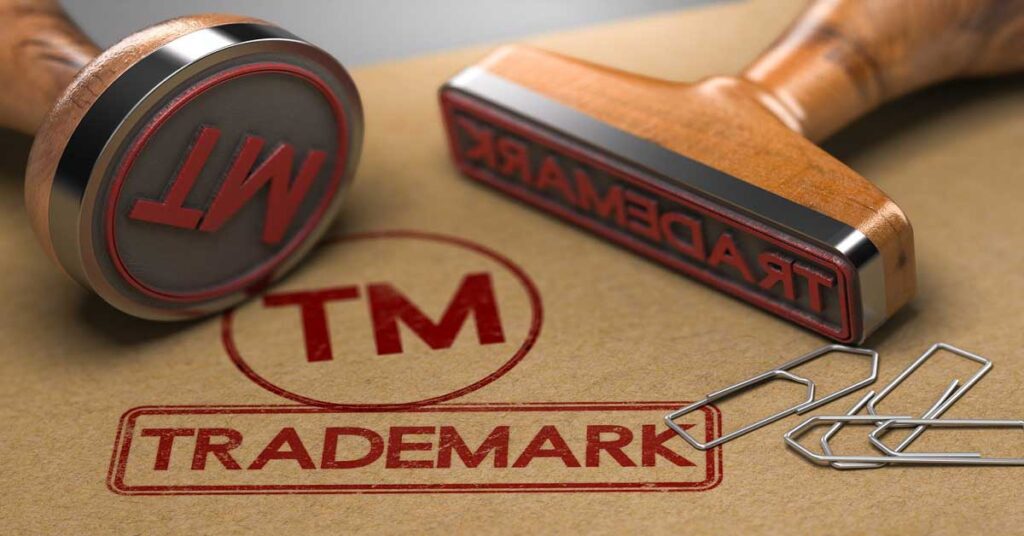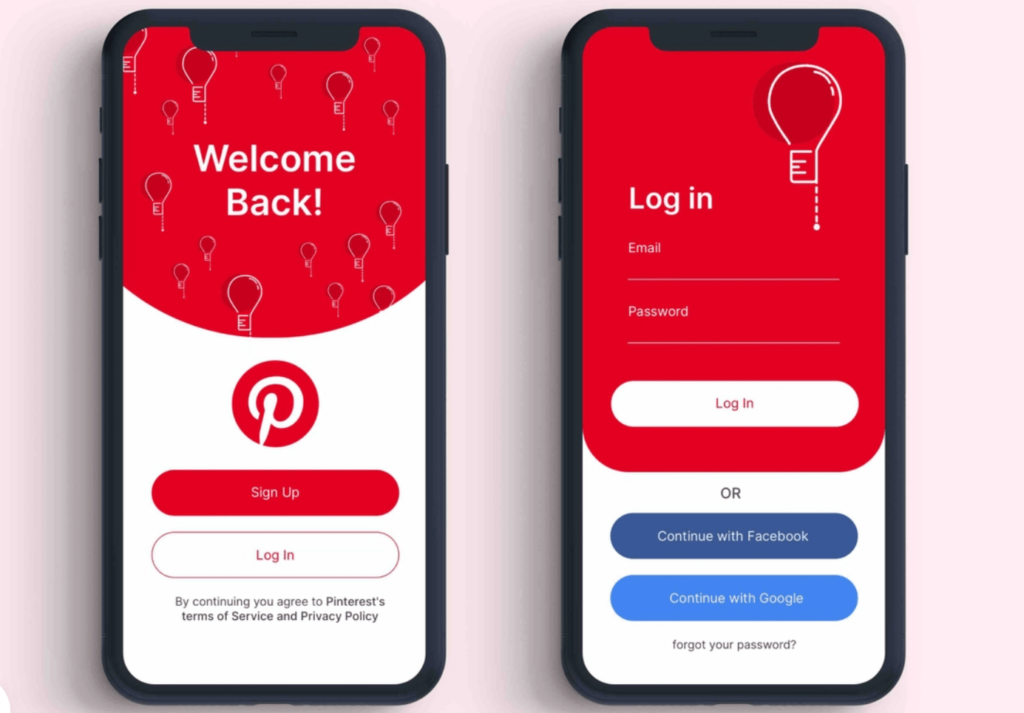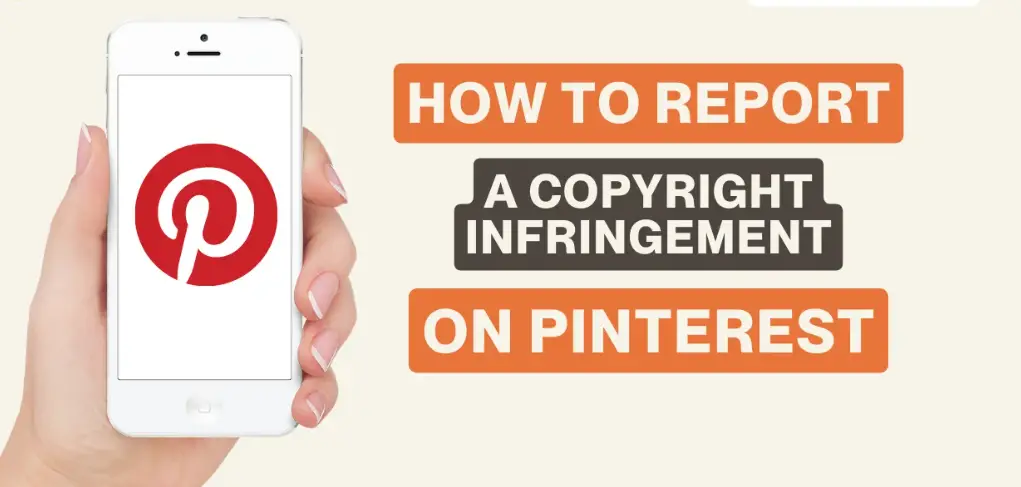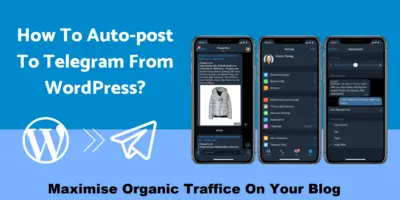As a content creator on Pinterest; you’ve likely poured your heart and soul into creating amazing content. Do you check for Pinterest Trademark Infringement?
Whether it’s stunning visuals, insightful recipes, or captivating travelogues, your work deserves protection. But have you considered the potential for Pinterest trademark infringement?
In the vibrant world of visual inspiration, Pinterest reigns supreme. Millions flock to the Pinterest platform to discover ideas, share inspiration, and curate collections (boards) across diverse themes. But with such a vast user base, the potential for intellectual property (IP) infringement lurks around the corner.
As a blogger with a decade of experience, I’ve seen my fair share of confusion regarding Pinterest trademark infringement. So, today, we’ll delve deep into this topic, helping you navigate the legal landscape and protect your creative content on Pinterest.com.
Demystifying Trademarks: The Foundation of Protection

In the bustling online world, where brands compete for attention, trademarks act as a vital shield, safeguarding your brand identity and the fruits of your creative labor. But what exactly are trademarks, and how do they form the foundation of protection for bloggers and creatives like yourself?
Let’s delve deeper and unpack the power of trademarks.
Understanding the Trademark Landscape:
- What qualifies as a trademark? Trademarks can encompass a variety of elements that distinguish your brand, including:
- Words: Your brand name, slogans, or even unique catchphrases can be trademarked.
- Logos: The visual representation of your brand, including symbols or designs, can be protected.
- Sounds: Distinctive sounds associated with your brand, like jingles or product sounds, can also be trademarked.
- Colors: In some cases, specific color combinations used in branding can be trademarked (think of the iconic yellow of Post-it Notes).
- Why are trademarks important? Trademarks offer several crucial benefits:
- Brand Recognition: A strong trademark helps consumers instantly recognize and associate your brand with a specific product or service. Consistency in your trademark use reinforces brand recognition.
- Consumer Protection: Trademarks prevent consumer confusion by ensuring products or services clearly originate from your brand. This fosters trust and loyalty.
- Competitive Advantage: A well-established trademark sets you apart from competitors and protects your brand reputation from being tarnished by lookalikes.
- Legal Enforcement: A registered trademark grants you the legal right to take action against infringement, safeguarding your brand investment.
Building a Strong Trademark Foundation:
- Choosing the Right Trademark: The key to a strong trademark lies in its distinctiveness. Here’s what to consider:
- Avoid Descriptive Terms: Generic terms describing your product or service are unlikely to be granted trademark protection.
- Conduct a Trademark Search: Before settling on a trademark, conduct a thorough search to ensure it’s not already in use by another business. The United States Patent and Trademark Office (USPTO) offers a searchable database for this purpose.
- Consider Getting Professional Help: A trademark attorney can guide you through the selection and registration process, ensuring your trademark is legally sound.
The Power of Registration:
While using a trademark consistently in commerce establishes some common law rights, registration with the USPTO strengthens your protection significantly. Benefits of registration include:
- Presumptive Ownership: A registered trademark establishes a presumption of ownership, making it easier to enforce your rights in court.
- Nationwide Protection: A federal registration grants you trademark protection across the United States.
- Public Notice: Registration puts others on notice of your claim to the trademark, deterring potential infringement.
- Border Protection: Registered trademarks can help prevent counterfeit goods bearing your trademark from entering the U.S.
Maintaining Your Trademark:
Trademarks require ongoing maintenance to retain their legal protection. Be mindful of:
- Proper Use: Ensure consistent and proper use of your trademark to maintain its distinctiveness.
- Renewal Requirements: Registered trademarks require renewal every 10 years to remain valid.
Trademarks are more than just logos or slogans; they are the cornerstone of your brand identity. By understanding the fundamentals of trademarks, taking steps to develop a strong trademark, and considering registration, you establish a solid foundation for protecting your creative work and fostering brand loyalty in the digital age. Remember, a well-protected brand is a thriving brand.
What is Trademark Infringement?
Imagine pouring your heart and soul into crafting captivating content, with a catchy name and a unique visual identity. Now, picture someone else using elements suspiciously similar to your brand, potentially misleading your audience. That’s the essence of trademark infringement, a scenario that can chip away at your brand’s credibility and growth.
Understanding Trademark Infringement:
Trademark infringement occurs when someone uses a trademark in a way that’s likely to confuse consumers about the source or origin of a product or service. Here’s a breakdown of the key elements:
- Unauthorized Use: The crux of infringement lies in the unauthorized use of a trademark. Someone using your brand name or logo without your permission can be infringing.
- Likelihood of Confusion: For infringement to occur, there must be a likelihood of confusion among consumers. This means a significant portion of the target audience could be misled into believing the infringing brand is associated with you.
Common Forms of Trademark Infringement on Pinterest:
The digital landscape presents unique challenges for brand protection. Here are some common ways trademark infringement can unfold on Pinterest:
- Deliberate Copying: This is the most blatant form, where someone creates a board title or pin description that directly copies your brand name or tagline to capitalize on your audience.
- Lookalike Logos and Designs: Subtle variations of your logo or design elements can still be confusing. Imagine a competitor’s logo using a similar color scheme or font style to yours.
- Pinning Trademarked Images: Sharing images with a competitor’s logo or copyrighted material without permission can be infringement, even if you credit the source.
- Selling Counterfeit Products: Promoting or selling products that bear a counterfeit version of a trademarked brand is illegal and infringes on the trademark owner’s rights.
The Impact of Infringement:
Trademark infringement can have several negative consequences:
- Damaged Brand Reputation: Confusion among consumers can erode the trust you’ve built with your audience.
- Loss of Revenue: If consumers are misled by infringers, you could lose potential traffic and sales.
- Legal Issues: If infringement is not addressed, it could lead to costly legal battles.
Protecting Yourself from Infringement:
Here are some proactive steps you can take to safeguard your brand on Pinterest:
- Register Your Trademarks: While not mandatory, registering your trademarks with the USPTO strengthens your legal position if infringement occurs.
- Monitor Your Brand: Regularly search Pinterest for mentions of your brand name, logo, or similar terms to identify potential infringement.
- Report Infringement: Pinterest has a reporting process for trademark infringement. Utilize it to notify them of any infringements you discover.
- Consider Legal Action: For serious infringements, consulting with an intellectual property lawyer is recommended.
Being proactive and understanding trademark infringement can empower you to protect your brand and ensure your creativity flourishes online. By taking these steps, you can build a strong brand identity and cultivate a loyal audience on Pinterest, free from the worries of imitation.
What is Trademark Infringement on Pinterest?

Simply put, trademark infringement occurs when someone uses a trademark (a recognizable word, symbol, or phrase) in a way that’s likely to confuse consumers about the source or origin of a product or service.
In the context of Pinterest, this could involve using a brand’s trademarked logo, name, or slogan in a way that suggests affiliation with the brand, even if you’re not selling anything.
Common Scenarios of Trademark Infringement on Pinterest
Here are some red flags to watch out for:
- Using Brand Names in Board Titles or Descriptions: Including a trademarked brand name in your board title or description solely to attract viewers might be considered infringement, especially if you’re not showcasing products from that brand.
- Pinning Trademarked Logos or Packaging: Sharing a picture of a trademarked product is generally okay, but using the logo or packaging as the sole focus of your Pin, without commentary or additional context, could be problematic.
- Creating Lookalike Logos or Names: Deliberately creating a logo or name that closely resembles a registered trademark is a clear case of infringement.
What Doesn’t Constitute Trademark Infringement?
Thankfully, not every use of a brand name on Pinterest is infringement. Here are some safe practices:
- Fair Use: The concept of fair use allows for limited use of copyrighted material for purposes such as criticism, commentary, or parody. This can extend to trademarks in certain situations. For instance, you can pin a trademarked product while offering your honest review.
- Informative Pins: If your Pin genuinely showcases a trademarked product as part of a larger project or inspiration board, it’s likely permissible.
- Transformative Use: When you use a trademarked element in a way that completely transforms its meaning or purpose, it might not be considered infringement.
Key Factors to Consider When Assessing Trademark Infringement
- Likelihood of Confusion: The central question is whether a reasonable consumer would be confused about the source or origin of the Pin.
- Strength of the Trademark: Well-known and distinctive trademarks receive greater protection.
- Intent of the User: Accidental or unintentional use is less likely to be considered infringement compared to deliberate attempts to mislead viewers.
How Can Trademark Infringement Happen on Pinterest?
We’ve established that trademark infringement occurs when someone uses your trademark in a way that confuses consumers about the source of a product or service. But on a platform like Pinterest, brimming with visual content and repinning, how does this translate into real-world scenarios?
Let’s dissect some of the common ways trademark infringement can manifest on Pinterest:
1. Mimicry in Board Titles and Pin Descriptions:
- Intentional Deception: This is the most straightforward case. A user might create board titles or pin descriptions that intentionally mimic a competitor’s brand name to mislead viewers. For example, a competitor selling generic sports apparel might name a board “Totally Not Nike” to capitalize on brand recognition.
- Unintentional Confusion: Even with no malicious intent, using a competitor’s brand name in a generic way can create confusion. For example, a blogger showcasing athletic wear from various brands might title a board “Workout Clothes Inspiration,” including pins featuring Nike products. While informative, it could unintentionally lead viewers to believe the blogger is affiliated with Nike.
2. The Gray Area of Lookalike Logos and Designs:
- Subtle Alterations: A user might create a logo that closely resembles a registered trademark with minor changes in color, font, or layout. This can be confusing for consumers, especially if the products or services offered are similar. Imagine a brand selling organic beauty products using a logo with a green leaf that looks strikingly similar to another established organic brand’s logo.
- Generic Elements: Sometimes, the line blurs when dealing with generic design elements. For instance, a clothing brand might have a logo featuring a simple hanger icon. This element itself might not be protectable, but if the overall design and brand name create confusion with another established clothing brand that uses a similar hanger icon, it could be considered infringement.
3. The Pitfalls of Third-Party Endorsements:
- Misrepresenting Affiliations: A user might pin a product image from a competitor’s website and imply an endorsement or affiliation that doesn’t exist. This can be misleading to consumers, especially if the user has a large following.
- Failing to Disclose Sponsored Content: If a blogger is promoting a product that uses a trademarked logo, they must clearly disclose that it’s sponsored content. Vague descriptions or a lack of disclosure can be misconstrued as an endorsement by the blogger, potentially infringing on the trademark.
4. The World of Counterfeits:
- Promoting Knockoffs: Selling or promoting counterfeit products that infringe on a brand’s trademark is illegal on Pinterest. This includes products with logos or designs that are substantially similar to a registered trademark.
- Unwitting Participation: Sometimes, users might unknowingly promote counterfeit products. If you encounter a deal that seems too good to be true for a brand-name product, it’s best to avoid pinning it.
Remember: Intent plays a role in trademark infringement cases. However, even unintentional infringement can be damaging, so it’s crucial to be mindful of how you use trademarks on Pinterest.
How to Proactively Safeguard Your Pins from Pinterest Trademark Infringement

As a blogger who pours your heart and soul into crafting original content, the prospect of someone infringing on your work on Pinterest can be disheartening. But fear not! By adopting a proactive approach, you can significantly reduce the risk of infringement and ensure your pins are rightfully recognized.
Here’s a detailed breakdown of strategies you can implement:
Building a Strong Defense:
- Watermarking Your Visual Content: Adding a subtle watermark with your brand name or logo directly onto your pins discourages unauthorized use. It subtly reminds viewers of the source and deters potential copycats.
- Optimizing Pin Descriptions: Craft clear and informative pin descriptions that establish ownership. Briefly mention your copyright or trademark (if applicable) and encourage viewers to share your work with proper attribution.
- Leveraging Pinterest’s Attribution Tools: Utilize Pinterest’s built-in attribution features, such as linking back to your original blog post or website within the pin description. This strengthens the connection between your pin and its source, making infringement easier to identify.
Monitoring and Addressing Infringement:
- Regularly Search Pinterest: Schedule time to search for your brand name, keywords related to your content, and even reverse image searches to identify potential infringements.
- Utilize Pinterest’s Reporting Tools: If you discover infringing content, don’t hesitate to report it directly to Pinterest using their user-friendly trademark infringement reporting form. Provide clear details about the infringing pin and your ownership of the trademark or copyrighted material.
- Engage in Direct Communication: In some cases, a polite message directly to the user explaining the infringement and requesting the pin’s removal might be sufficient.
Strategies for Repeat Offenders:
- Gather Evidence: If a user repeatedly infringes on your work, document each instance. This includes screenshots of the infringing pins, timestamps, and any communication attempts.
- Consider Legal Action: For persistent infringement, consulting with an intellectual property lawyer is recommended. They can advise you on the best course of action, which may involve sending a cease and desist letter or pursuing legal action.
Proactive Content Creation:
- Focus on Originality: The more unique and original your content, the less likely it is to be mistaken for someone else’s work. Experiment with creative visuals, captivating descriptions, and a distinct brand voice.
- Develop a Content Library: Build a strong portfolio of original pins that showcases your expertise and style. This not only discourages infringement but also establishes you as a credible source of valuable content.
- Embrace Collaboration: Collaborate with other bloggers and creatives. This cross-promotion strategy not only expands your reach but also fosters a sense of community, potentially leading to joint content creation efforts.
Remember:
- Stay Informed: Intellectual property laws and copyright regulations can evolve. Keep yourself updated on relevant changes to ensure your protection strategies remain effective.
- Seek Professional Guidance: For complex intellectual property matters, consulting with an IP lawyer is always advisable. They can provide tailored advice based on your specific situation.
By adopting these proactive measures, you empower yourself to safeguard your content, build brand recognition, and foster a thriving presence on Pinterest. Remember, protecting your intellectual property is an investment in your creative journey.
How To Report a Trademark Infringement on Pinterest

Discovering trademark infringement on Pinterest can be frustrating. Here’s a comprehensive guide to navigating the situation and protecting your brand:
1. Gather Evidence:
The first step is to document the alleged infringement. This evidence will be crucial if you decide to report the issue or pursue legal action. Here’s what to collect:
- Screenshots: Capture screenshots of the infringing content, including the pin itself, the user’s profile, and any relevant descriptions.
- URLs: Save the URLs of the infringing pins for easy reference and reporting.
- Details of Your Trademark: Have a copy of your trademark registration or documentation readily available.
2. Assess the Severity:
Not all instances of potentially infringing content warrant a formal complaint. Consider the following:
- Nature of the Infringement: Is it a blatant copy of your logo or a more subtle misuse of your brand name?
- The intent of the User: Does the pin seem like an intentional attempt to deceive or simply an uninformed user sharing content?
- Potential Harm: How likely is this instance to cause confusion among consumers about the source of a product or service?
3. Choose Your Course of Action:
Based on your assessment, you have several options:
- Direct Contact: If the infringement appears unintentional, a polite message to the user explaining the issue and requesting the pin’s removal might be enough.
- Report to Pinterest: Pinterest offers a trademark infringement reporting form (https://policy.pinterest.com/trademark) where you can submit details about the infringing content. This is a good option for more serious infringements.
- Seek Legal Counsel: For blatant infringement or if the user doesn’t comply with your request, consulting an intellectual property lawyer is recommended. They can advise you on your legal options and the best course of action.
4. Reporting to Pinterest:
If you choose to report the infringement to Pinterest, here’s what to expect:
- Gather Information: Be prepared to provide details about your trademark registration, the infringing content, and how it violates your trademark rights.
- Review Process: Pinterest will review your report and may contact the user for their response.
- Potential Outcomes: Based on their review, Pinterest may remove the infringing content or take no action. You’ll receive a notification of their decision.
5. Additional Considerations:
- Counter-Notifications: The user who posted the infringing content may have the right to file a counter-notification if they believe the removal was a mistake. Be prepared to potentially defend your claim.
- Repeat Infringements: If you encounter repeated infringements from the same user, document them and consider escalating the issue with Pinterest or seeking legal action.
- Staying Informed: Pinterest’s policies and procedures can change. Stay updated to ensure you’re following the most current reporting process.
Remember:
- Be Professional: Maintain a professional tone throughout the process, whether contacting the user directly or reporting to Pinterest.
- Act Promptly: The sooner you address the infringement, the less likely it is to confuse consumers.
- Document Everything: Keep a detailed record of your communication and actions throughout the process.
Beyond Trademark Infringement: Pinterest Copyright Infringement Considerations
While this post focuses on trademarks, Pinterest copyright infringement is another concern on Pinterest. Copyright protects original creative works like photographs, illustrations, and written content.
Always ensure you have permission before pinning copyrighted material. Pinterest provides a copyright infringement reporting process similar to that of trademarks.
Conclusion: Trademark Infringement on Pinterest
By understanding Pinterest trademark infringement and taking the necessary steps to protect your content, you can continue sharing your creativity with peace of mind. Remember, protecting your intellectual property empowers you to build a strong online presence and ensure your hard work is recognized.
Bonus Tip: Consider creating a “Terms of Use” page for your blog, outlining your expectations for how others can share your content.
Further Resources:
- U.S. Patent and Trademark Office: https://www.uspto.gov/
- Pinterest Trademark Policy: https://policy.pinterest.com/trademark
Disclaimer: This blog post is for informational purposes only and does not constitute legal advice. Please consult with an attorney regarding specific legal questions.
Discover more from Digital Wealth Guru
Subscribe to get the latest posts sent to your email.









Comments